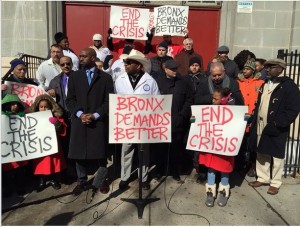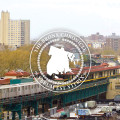Analysis Shows Pipeline to Quality Schooling Reserved for White/Asian Students, while Black/Hispanic Students Condemned to Unequal and Inferior Schools
Mayor de Blasio Needs to Keep His Promise to End Inequality — Educational Inequality Leads to Income Inequality
A new study by Families for Excellent Schools analyzing data on educational mobility shows New York City children are sorted into two vastly different public school systems, condemning low-income students of color to unequal and inferior schools.
 The data reveals that while a very small sliver of mostly white and Asian, largely affluent school children are predestined to quality schools, half of the city’s school children are condemned to attend failing schools for their entire academic life. In these disparate systems, the 116,000 students attending the city’s top 141 schools are nearly guaranteed academic success because their elementary schools commonly feed into the city’s best middle and high schools. In a separate, unequal, and segregated set of 850 schools, 478,000 students (90% of color, 89% living in poverty) are effectively locked into attending failing school after failing school. That’s more students than the entire districts of Dallas, Washington DC, and Boston combined.
The data reveals that while a very small sliver of mostly white and Asian, largely affluent school children are predestined to quality schools, half of the city’s school children are condemned to attend failing schools for their entire academic life. In these disparate systems, the 116,000 students attending the city’s top 141 schools are nearly guaranteed academic success because their elementary schools commonly feed into the city’s best middle and high schools. In a separate, unequal, and segregated set of 850 schools, 478,000 students (90% of color, 89% living in poverty) are effectively locked into attending failing school after failing school. That’s more students than the entire districts of Dallas, Washington DC, and Boston combined.
“Schools in Harlem are as separate and unequal as ever,” said Kim Booker, a parent of a student in the failing schools pipeline. “It’s heartbreaking to know failing schools are the only thing New York City can offer my son.”
“New York City’s Tale of Two school Systems condemns 478,000 children to an unequal and inferior education,” said Jeremiah Kittredge, Executive Director of Families for Excellent Schools. “It’s time for Mayor de Blasio to act on his own campaign promise, and take bold action to end this crisis.”
Earlier this year, the Civil Rights Project at the University of California at Los Angeles (UCLA) released a report showing that “education apartheid” is alive and well in New York City. The report concluded that City schools are the most segregated public schools in the United States, with many Black and Latino students attending low performing schools with virtually no white classmates.
“It is time to put all students first, to end “zip code education” in this City for district schools and for charter schools, and it is time to implement enrollment diversity goals for each and every school,” said Mona Davids, president of the NYC Parents Union.
Key Findings:
- New York City schools have effectively become stratified by both race and class:
◦ Despite there being more than twice as many black and Hispanic students (68%) as there are white and Asian students (31%) in New York City schools, white and Asian students are at least six times more likely to begin school on the pipeline to success–and the disparity worsens as they grow older.
- Where a student is zoned for elementary school becomes the most important criteria for predicting whether a child is able to graduate from high school college-ready. The odds against a child who starts out in a failing school ever attending a better one are extraordinary:
◦Quality middle schools are common destinations for students in low-performing elementary schools only 1.6% of the time.
◦ Quality high schools are common destinations for students in low-performing middle schools only 3.3% of the time.
- There are two distinct Educational Pathways:
Pathway #1: Higher-Performing Schools
▪ In these 141 tightly linked schools, at least 60% of students meet academic standards.
▪ Of the 116,000 students in this system, only 29% are children of color (compared to 78% for all other public schools outside of this pathway).
▪ Only 45% of students are from low-income families, far below the 82% average for the rest of the city.
▪ The median household income of families who live near high-performing elementary schools is $120,651.
Pathway #2: Below-Average Schools
▪ In these 850 interconnected schools, no more than 30% of students meet academic standards.
▪ Of the 478,000 students in this system, 90% are black or Hispanic.
▪ 89% of students are from low-income families, above the citywide average of 82%.
▪ The median household income of families who live near low-performing schools is $40,707, three times less than those who live near high-performing schools.















Follow Us